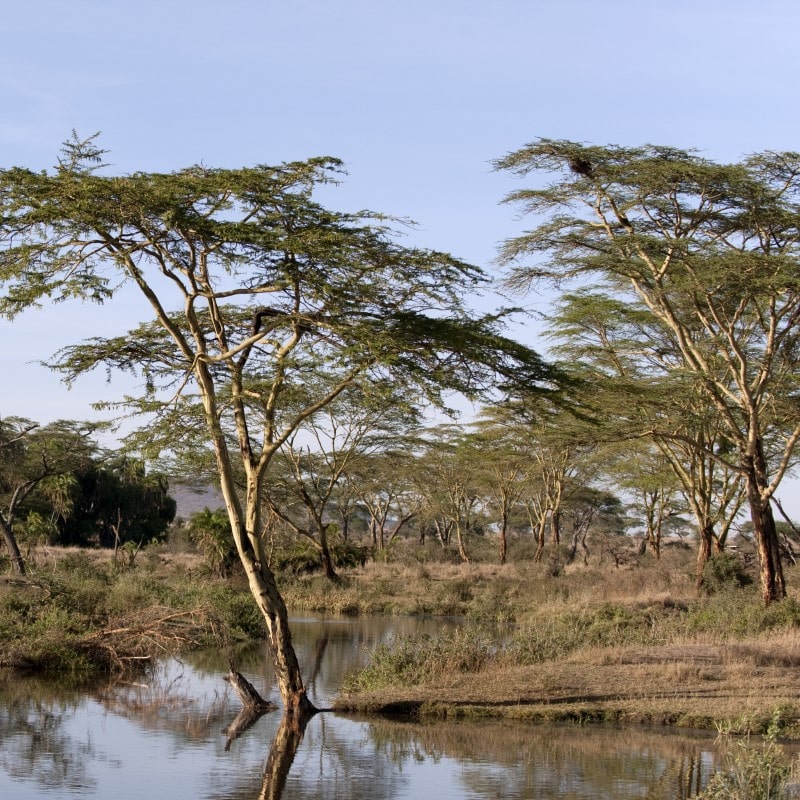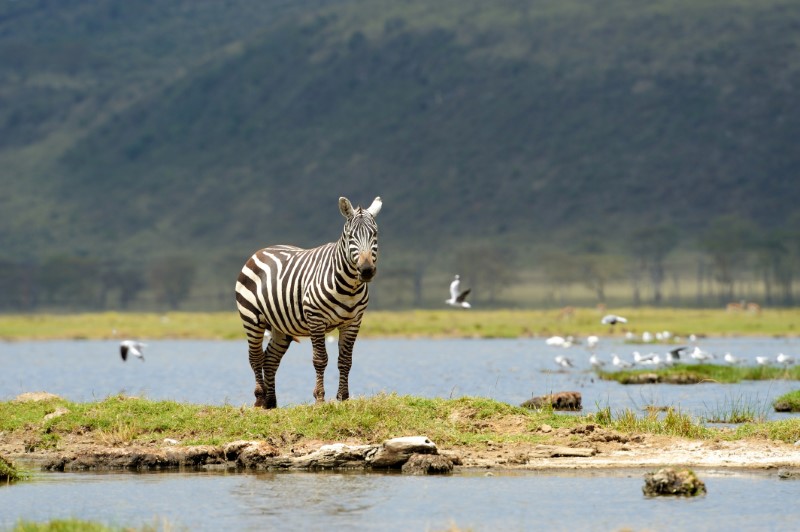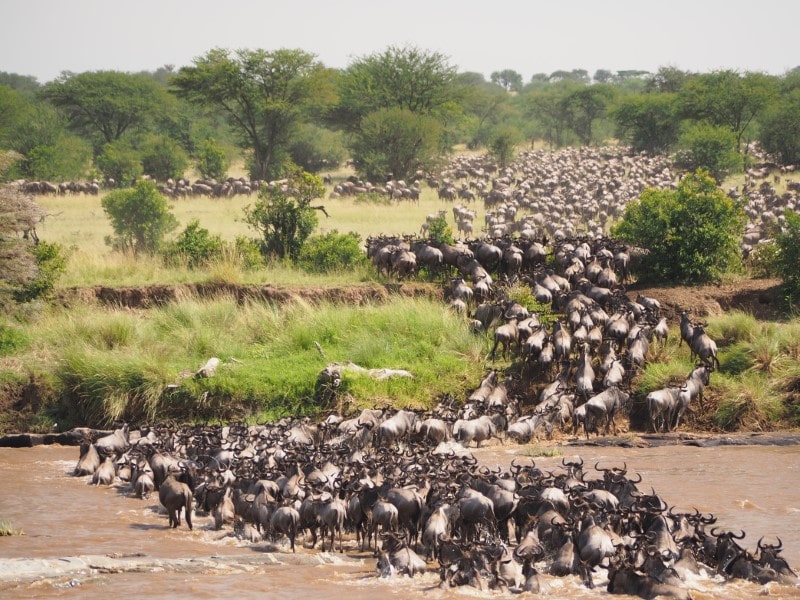Safaris |
Serengeti
Serengeti
The Serengeti
Within Tanzania’s largest and most admired wildlife sanctuary, the gorgeous and vast Serengeti offers visitors the experience of a lifetime. As one of Africa’s most enthralling safari areas, there is so much to see. Covering around 15,000km of primarily gently rolling or flat grasslands with the occasional kopje, or rock outcrops, thrown in, the Serengeti National Park is an outstanding spectacle.

Serengeti
There is a huge quantity and diversity of game within the Serengeti
There are an estimated two million wildebeest, as well as hundreds of thousands of Thompson’s gazelle, half a million zebra, tens of thousands of impala, Grant’s gazelle, eland, hartebeest, topi (tsessebe), and other antelope. They are hunted by the predators that make these plains famous.
With year round safaris, some of the game resides permanently in “home” areas, while others, including the zebras and wildebeest, take part in migration. Migration is an amazing sight that takes place in the remote and wild areas. If you plan your trip carefully, you may be able to witness migration, one of the greatest wildlife shows on earth.
The Serengeti National Park is the center of an entire ecosystem that includes the Ikorongo Game Reserve, Grumeti Reserve, Loliondo Controlled Area, a portion of the Ngorongoro Conservation Area, Maswa Game Reserve, and Kenya’s small Massai Mara Game Reserve. The entire area is referred to as the Greater Serengeti area, or the Serengeti Mara ecosystem.
Serengeti
Northern Serengeti
The northern Serengeti is a gentle rolling region that is broken up by the occasional kopjes and hills, as well as small rivers. It stretches from Seronera for around 100km north to the Kenyan border. It is an interesting and varied country that is far from the park’s primary entry point. As a result, it receives very few visitors that are delighted to see a number of permanent populations of wildlife, including the gorgeous Lobo Kopje.As you travel further north, you will see fewer vehicles. Even during the migration, between August and October, you will still be able to enjoy stunning crossings of the Mara River. One of the most amazing areas is the wild Lamai Wedge, an area of land between the Kenyan border and the Mara River, while includes the scenic Wogakuria Kopjie, as well as a gorgeous series of plains and valleys rich with game. This is the only part of the park that allows off-road driving.


Serengeti
The Seronera area
Just north of the short grass plains, in the heart of the park, Seronera includes everything that makes the Serengeti great. It is a lovely area, complete with lines of hills, open plains, and occasional kopjes. There is a phenomenal number of wild game, including large amounts of relaxed cheetahs, leopards, and lions. They live off the resident herbivores, as well as migrating game. Migration passes through here in April/ May. However, Seronera is reachable from the Southern Plains and the Western Corridor. This means you can use it as a base to see migration from November to June
Serengeti
Southern plains
The southern part of the Serengeti National Park stretches into the north of Ngorongoro Conservation Area and the southwest Loliondo and Maswa Game Reserve. Covered with short grass plains, there are small kopjes that are home to plenty of resident game. Outside of these refuges of permanent wildlife, the area is primarily open and flat. From late November to April, it is teaming with grazing wildebeest.


Serengeti
Western Corridor
Stretching to the west, almost to Lake Victoria, the Serengeti narrows into what’s known as the Western Corridor. The key feature of this area is the two rivers, the Grumeti and the Mbalageti, which run almost parallel, each supporting a band of most, evergreen riparian forest. This area sustains a very good permanent game population, including plenty of zebra and wildebeest, all the predators and forest ‘specialists’ like colobus monkeys. The birdlife is particularly varied. The migration passes through between about May and July – pausing to gather momentum before crossing the crocodile-rich waters of the Grumeti River, into the Grumeti Reserve
